Have you ever wondered where the world’s largest rodent hangs out? Maybe you’ve seen pictures of these chill, social creatures soaking in hot springs or lounging by the water and thought, “Do capybaras live in tropical rainforests?” Well, you’re not alone! This question pops up a lot, and today, we’re diving deep into capybara territory to set the record straight.
Spoiler alert: Yes, capybaras do live in tropical rainforests! But there’s a lot more to their story.
Where Can You Find Capybaras?
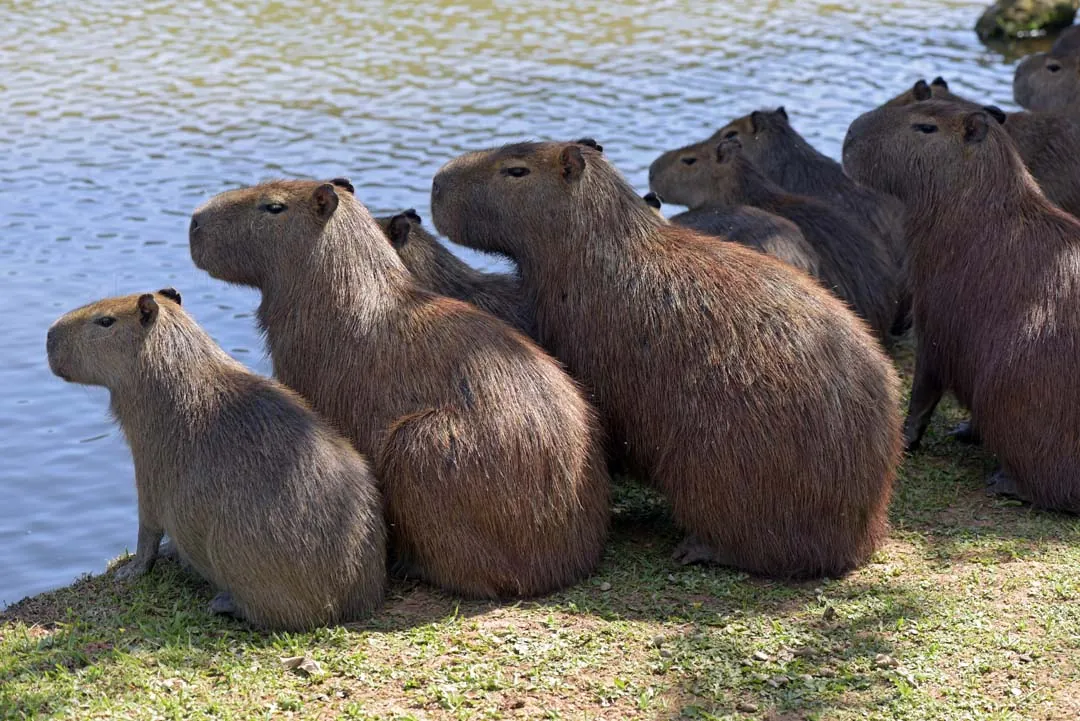
Capybaras are native to South America, and they thrive in regions where water is abundant. Think Amazon Basin, flooded savannas, riverbanks, and yes, tropical rainforests. These semi-aquatic animals stick close to water sources like rivers, lakes, and marshes because water is their comfort zone—it’s where they escape predators and cool off during those humid rainforest days.
But let’s zoom in on the tropical rainforest part. In places like the Amazon Rainforest, capybaras are right at home. The dense vegetation offers them plenty of food (we’ll talk about their diet soon), while the waterlogged terrain gives them the perfect hideout from predators like jaguars, pumas, and caimans.
What Makes the Tropical Rainforest a Capybara Paradise?

Tropical rainforests are a goldmine for capybaras. Here’s why these lush environments are perfect for them:
1. Access to Water
Water is life for a capybara. They swim, they cool off, and when danger strikes, they dive in. Tropical rainforests are crisscrossed with rivers and swamps, giving capybaras the perfect aquatic playground.
2. All-You-Can-Eat Buffet
Capybaras are herbivores, and rainforests are packed with their favorite snacks: grasses, aquatic plants, fruits, and even tree bark when food gets scarce. This diverse diet helps them stay healthy year-round.
3. Camouflage Heaven
Their brownish fur blends seamlessly with the muddy waters and dense forest floor, helping them stay under the radar from predators.
4. Room for Socializing
Capybaras are super social and live in groups of 10 to 30. Rainforests provide enough space and resources for these large gatherings, making them feel right at home.
How Do Capybaras Survive in the Wild?
Let’s be real: life in the rainforest isn’t a walk in the park. But capybaras are built to handle it.
Adaptations That Keep Them Thriving:
- Webbed Feet: Perfect for swimming through rivers and marshes.
- Eyes, Ears, and Nostrils on Top of Their Heads: Ever seen a capybara peeking out of the water? This unique feature lets them stay submerged while keeping a lookout for predators.
- Thick Skin: Their sparse fur might seem like a drawback, but it’s actually an advantage in the rainforest’s humid environment. When things heat up, they roll in mud to stay cool and keep bugs at bay.
Predator Evasion
Capybaras have to deal with rainforest heavyweights like jaguars, anacondas, and caimans. Their main defense? Run to the water! These animals are excellent swimmers and can even hold their breath for up to five minutes, making water their ultimate safety zone.
What Do Capybaras Eat in the Rainforest?
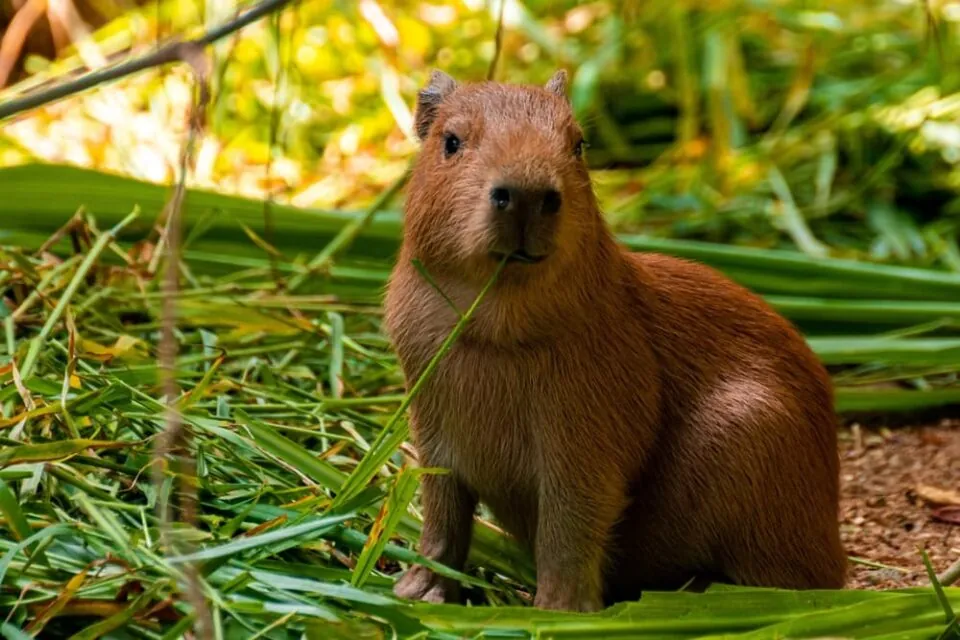
Capybaras are grazers—they love grass more than anything. But in a rainforest, where seasons affect what’s available, they mix it up a bit.
Here’s their menu:
- Wet Season: Grasses and aquatic plants.
- Dry Season: Bark, fruits, and reeds (basically, whatever’s around).
They also have a quirky (but practical) eating habit called autocoprophagy. Yep, they eat their own poop to redigest nutrients they might’ve missed the first time. Gross? Maybe. Efficient? Absolutely.
Are Capybaras Family-Oriented?
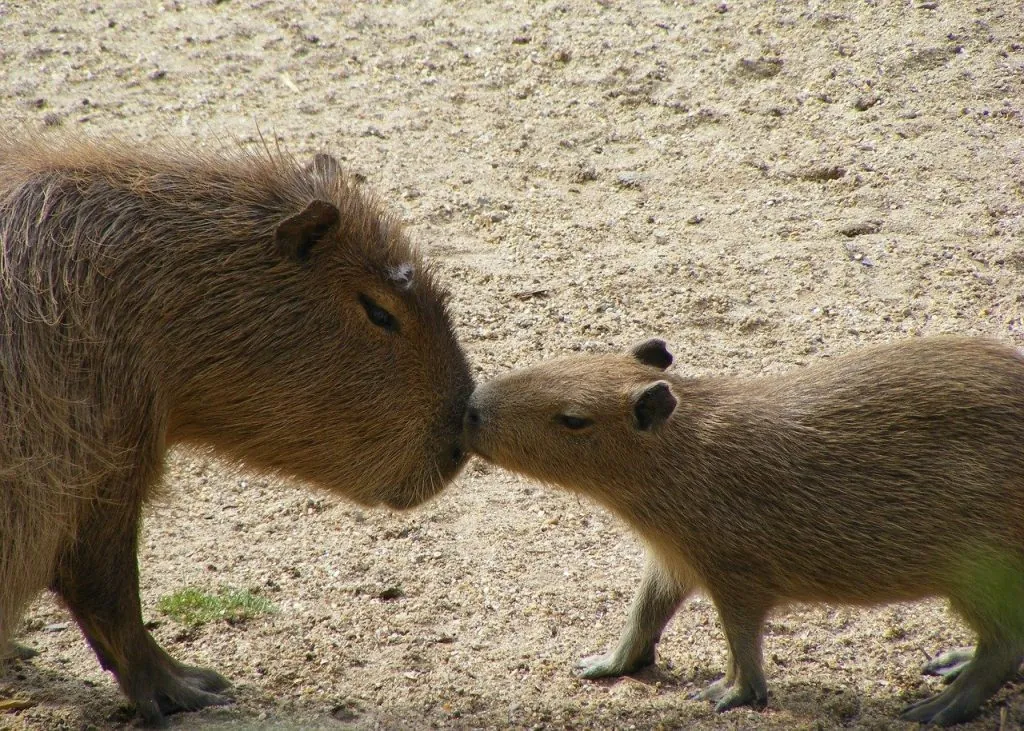
You bet. These animals are all about community. Capybaras are like the social butterflies of the rainforest—except bigger, furrier, and aquatic. They live in large groups with a dominant male leading the pack. This structure helps them protect each other and share resources.
Picture this: a big group of capybaras chilling together on a riverbank. Some are munching on grass, others are taking a quick dip, and a few are keeping an eye out for predators. It’s teamwork at its finest.
Fun Facts About Capybaras You’ll Love
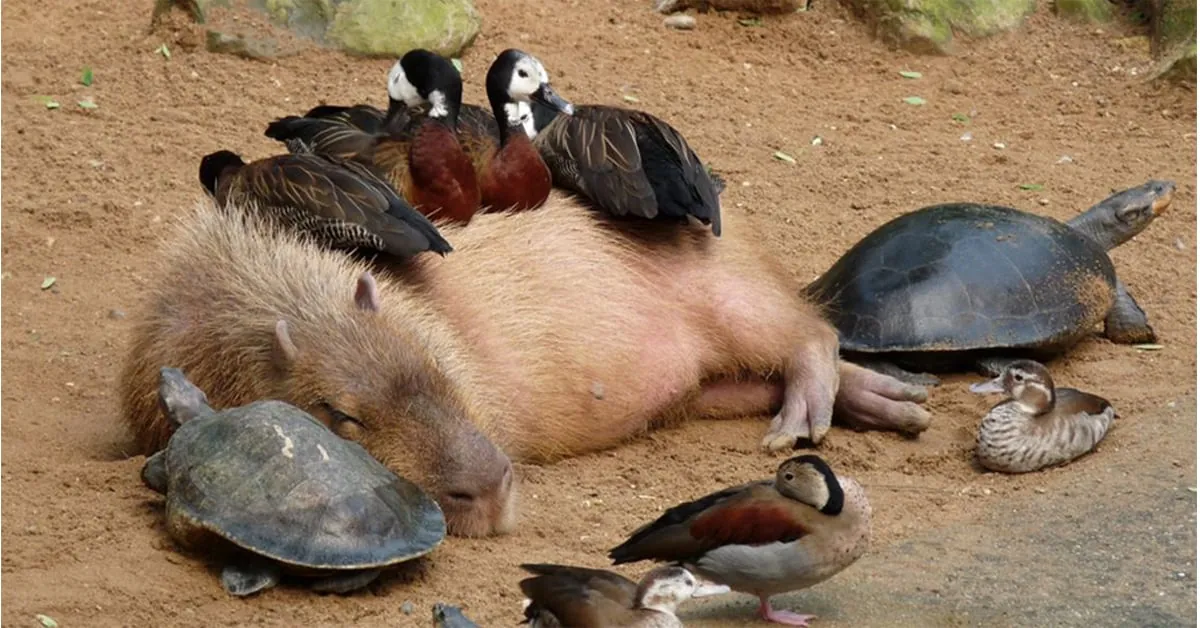
- They’re the “chill” animals of the wild. Capybaras get along with everyone. Birds perch on them, monkeys hang out nearby, and they’re often seen lounging with other species.
- They squeak and chatter! These vocal creatures have a range of sounds, from purrs to alarm barks, to communicate with their crew.
- They’re crepuscular. That means they’re most active during dawn and dusk, taking full advantage of cooler temperatures.
FAQs About Capybaras in the Tropical Rainforest
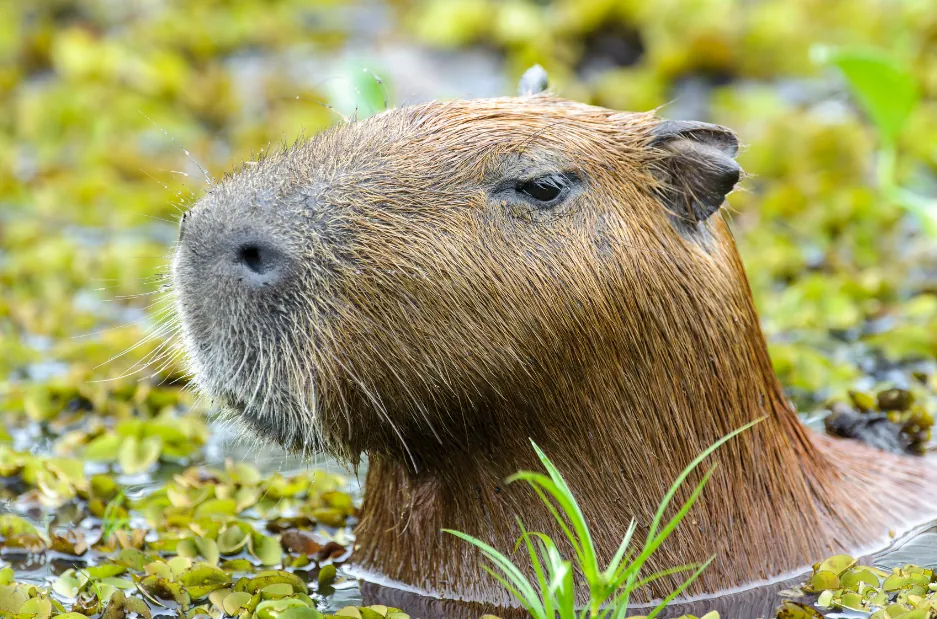
1. Do capybaras live only in tropical rainforests?
Not at all! While they’re found in tropical rainforests, capybaras also thrive in savannas, wetlands, and any area with access to water.
2. Are capybaras endangered?
Nope! Capybaras are classified as a species of Least Concern by the IUCN. But habitat loss and hunting in some areas mean we should still keep an eye on their populations.
3. Can capybaras survive without water?
Not really. Water is essential for their survival. It’s where they escape predators, cool off, and even socialize.
4. What predators do capybaras face in the rainforest?
Capybaras have a long list of predators, including jaguars, pumas, caimans, and large snakes like anacondas.
5. Why are capybaras so social?
Living in groups gives capybaras safety in numbers. Plus, their friendly nature makes them a great fit for group living.
Why Capybaras Are Nature’s Zen Masters

If there’s one thing we can learn from capybaras, it’s how to stay calm under pressure. They’ve mastered life in one of the toughest environments—the tropical rainforest—by being adaptable, social, and straight-up cool.
So, next time you see a capybara meme or hear someone ask, “Do capybaras live in tropical rainforests?” you’ll know the answer. And maybe, just maybe, you’ll think of these furry little zen masters next time you need a reminder to go with the flow.
Final Thoughts
Capybaras in tropical rainforests are the ultimate survival story. From their water-loving ways to their adaptable diet, they’ve nailed life in one of Earth’s most complex ecosystems.
Whether you’re a capybara fan (who isn’t?) or just curious about rainforest wildlife, these creatures remind us that staying connected to your environment—and your community—makes all the difference.
Want to know more about capybaras, their habitats, or other fascinating wildlife? Keep exploring! There’s a whole world out there just waiting for you to discover.
Let’s keep it real: capybaras are amazing. And now you know why the tropical rainforest is their perfect home.
